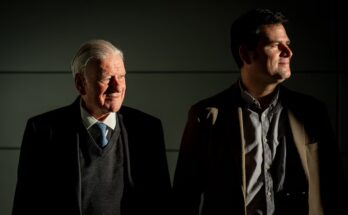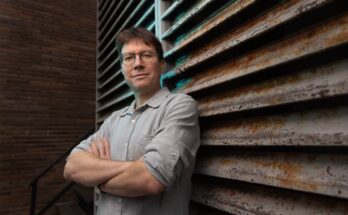Dr. Ellen Ochoa is an accomplished engineer, former astronaut, and pioneering leader in space exploration. In 1993, she became the first Hispanic woman of Mexican descent to travel into space, aboard the discovery of the Space Shuttle. During his NASA career, he spent nearly 1,000 hours in orbit during four space missions. But his story goes further.
Born May 10, 1958, in Los Angeles, California, Dr. Ochoa earned her bachelor’s degree in Physics from San Diego State University and her master’s and doctoral degrees in Electrical Engineering from Stanford University. Before joining NASA, he conducted pioneering research on optical systems for image processing and computer vision. After her time as an astronaut, she made history again by becoming the first Hispanic director of NASA’s Johnson Space Center. There, he advocated for diversity, science, technology, engineering and mathematics (STEM) education, and innovation in human spaceflight.
Ask. What does it mean to you to be a role model for the Latino community thanks to your historic successes?
Answer. What has been truly wonderful over these last 30 years has been the opportunity I have had to reach so many people. When I was still at NASA as an astronaut, I gave a lot of talks at schools, many of which had a high percentage of Hispanic students and who had never seen someone like me before. That’s why I was always excited to go. Since then, I have continued my outreach work, speaking to a very diverse audience, but also making podcasts and writing some bilingual children’s books about science and engineering. I had many different ways to reach kids, to get them thinking about science and engineering, STEM careers, or even setting ambitious goals, whatever they were interested in. It was very rewarding.
Q. How has your Latino identity influenced your professional career and how you have approached these challenges?
R. I always have to think about the people who came before me and who made it possible for me to fill this role. When I was in college, NASA selected the first female astronauts and the first astronauts of color. It was a huge milestone due to all the people who were part of the women’s rights movement in the 1970s. And if we go much further back, we see that they also fought to get women the right to vote. If it weren’t for all this, the government would not have opened jobs to women, including astronauts. So, since I flew into space, I’ve been able to make an impact and continue on that path in hopes of inspiring a lot of people. I feel like I’m one more in a long list of people who have had the opportunity to gain the same rights as everyone who didn’t have them before.
Q. Have you ever met people who thanked you for making their path easier?
R. Obviously! It’s always very rewarding when someone comes to me and says, “When I was in school, I read about you and you inspired me to study science and engineering. Now here I am.” Especially when I am aware of how much role models have influenced me. Sally Ride flew when I was in the middle of my PhD and that made a big difference. Seeing her in space and knowing that she had a physics degree and had studied at Stanford, where I was doing my PhD, helped me see all those things we had in common and think, “Well, maybe this is something I could do, too.”
Q. Of all the major accomplishments in your career, which were you most proud of?
R. Of course, all my space flights. And something I’m thinking about, since we’re only a couple of weeks away, is a milestone related to the International Space Station, where 25 years of continuous habitability on board by astronauts will be commemorated. I participated in two flights that were part of the station assembly. For a time I worked in the Astronaut Office responsible for this office’s support of the space station program. I have traveled to Russia several times to develop protocols on how to train crews and how to select them. Now, to see that it is still going strong after 25 years, with not only the five original international space agencies representing 15 countries, but more than 100 countries participating in some way, whether with scientists conducting experiments on board or with educational activities, is very gratifying. It really became something that, in my opinion, surpassed what we thought when we were working on it.
Q. The We Are All Human gala honored him Oct. 30 for his leadership and contributions. What does receiving this recognition mean to you?
R. It was something totally unexpected. The event celebrates and recognizes the contributions of the Hispanic population in the United States in areas such as economic progress, innovation and culture. I am very proud to be recognized.
Q. In celebration of Hispanic Heritage Month, a new Barbie doll was unveiled in her honor. How did you feel when you found out you were going to have yours? doll?
TO. This was another thing that came out of nowhere and surprised me. About a year ago, Mattel’s Barbie line reached out to me. They described a series to me called “Inspiring Women”. They had already made 20 other dolls in the series, including historical figures such as Susan B. Anthony and Amelia Earhart. They worked with me for a whole year on the doll, including what she would wear. They wanted to focus on my first space flight. That’s why I wear the orange throw and entry suit.
Q. How would you like to be remembered?
R. First and foremost, everything we do at NASA is a team effort. I always tell students that to be a good astronaut, you have to know how to work in a team. I hope people understand that I couldn’t have accomplished everything I’ve accomplished at NASA without the great team around me. This was especially true when he ran the Johnson Space Center. Ultimately, I hope people understand that with hard work, determination and support, the sky is not the limit.

Q. What advice would you give to young Latinas who dream of following in your footsteps?
R. I would tell them: “We need you”. We need as many bright minds as possible, as well as people who are interested, motivated and willing to work hard. It is important to persevere. I think what really helped me was finding people who supported me. For every teacher who discouraged me, there was another who supported me, encouraged me, and told me to keep going. It helped me a lot, especially when I met people who thought women or Latinos shouldn’t do what I wanted to do.



